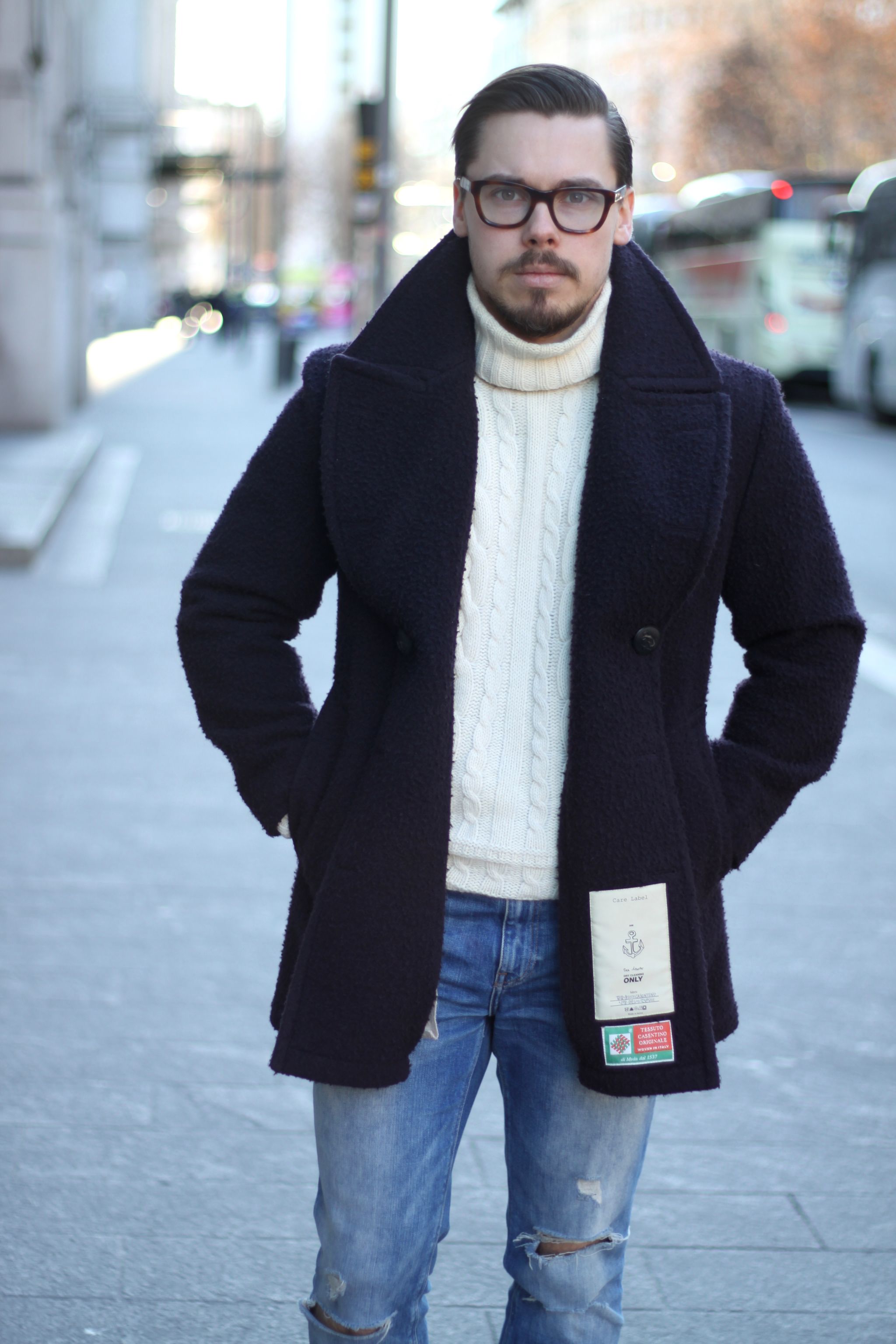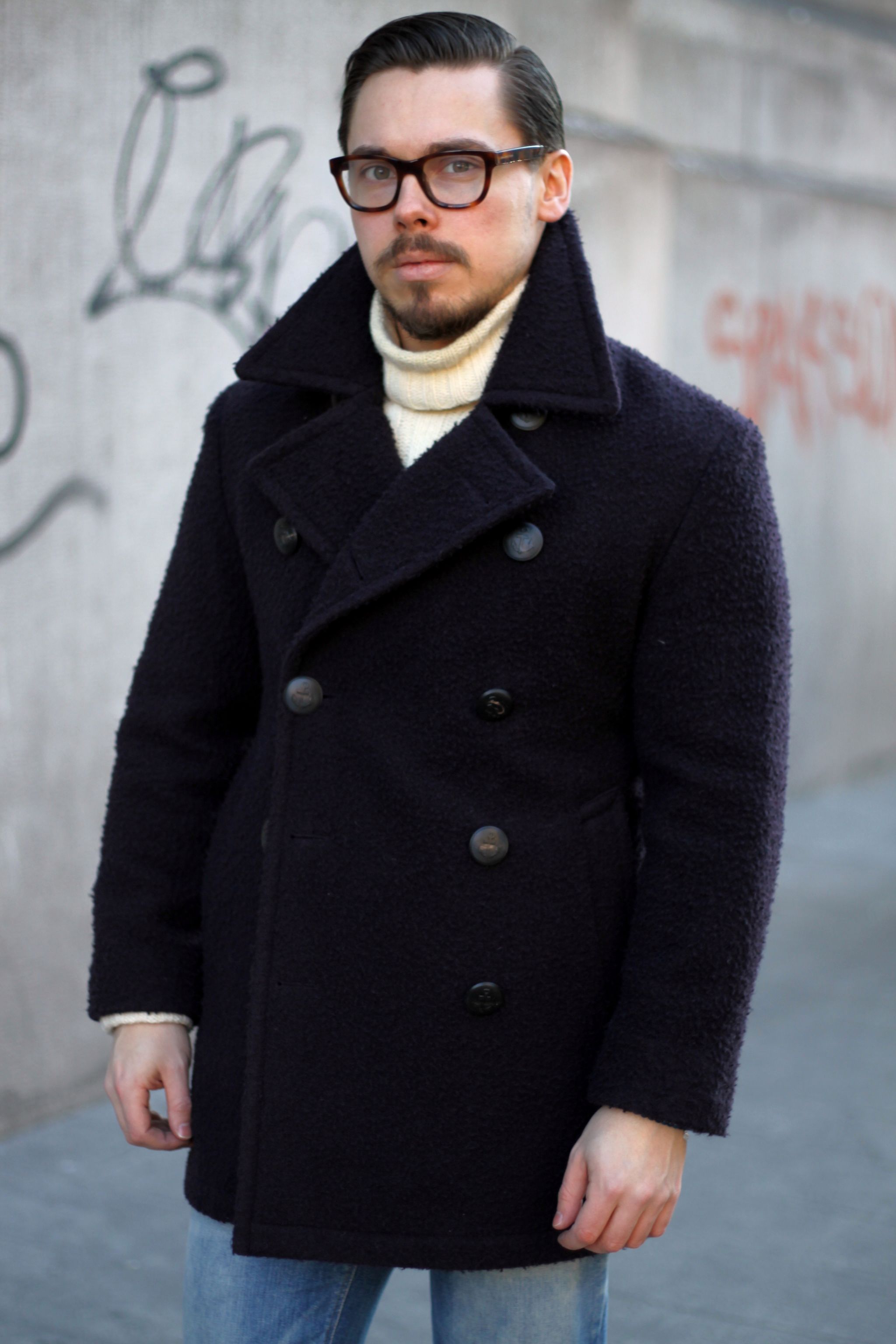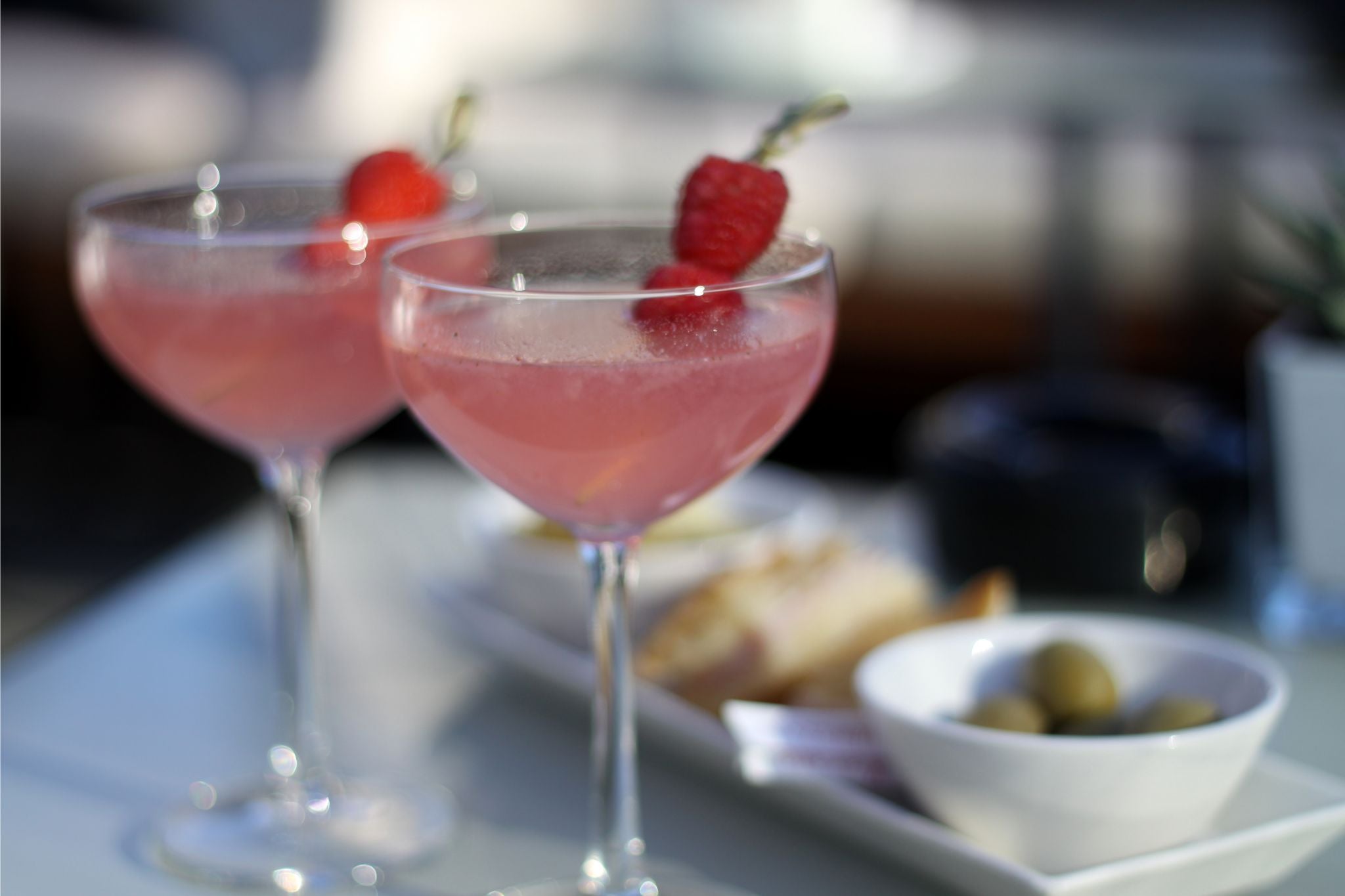
Bastong peacoat - and the care label.
Pea coat in a nutshell
In terms of history of the peacoat, several differing versions are told. Some say that it was in the first place designed for “reefers”, in other words for the sailors who had to climb the riggings of sailing ships. Some guys dates the origin of the peacoat to the early 18th century and Netherlands. They say that the term is derived from the Dutch word pijjakker. Thirdly there are sources that claim that it was a British guy named Edgard Camplin who created a coat for the uniform of British petty officers which then became named as pea coat. But more important than history is the way one can use a peacoat nowadays.
To put it shortly pea coat (or pea jacket) is an outer coat, generally made of navy blue-colored heavy wool. Traditional peacoats are characterized by short length, broad lapels, double-breasted fronts, often large wooden, metal or plastic buttons, and vertical or slash pockets. There are also peacoats that are longer in length. That kind of coats that extends to the thighs are called Bridge coats. As you can see from the pictures my coat could almost be called as a bridge coat. However that is mainly due my short length rather than features of the jacket.
Most of classic peacoats are as mentioned made of heavy wool called Melton that includes 80% wool and 20% artificial fibers. In addition to those most classic pieces there are many different kind of versions on the market ranging from pure cotton to cotton-wool blends and even fully artificial fibers. My suggestion and recommendation however is to leave those trendy nylon and polyester blend coats to the store and invest to a piece that is rather made from high-quality wool. 
Dark blue and off-white work perfectly together.

One way to wear your peacoat is to button it like the Italians button their double-breasted blazers - open.
Navy blue casentino pea coat
Most of my overcoats are rather formal. For this winter I decided to acquire something a bit more casual to complement the selection. First I got a new down parka by Ralph Lauren RLX and next in line was a new peacoat. Or in fact the peacoat was put on the list only after I had seen the new model that Korean Bastong had came up for this fall and winter season.
In terms of design, cut and details the peacoat by Bastong is pretty classic. It features 4x2 buttoning, broad lapels, vertical pockets and even the cordage can be found from the back of collar. The dark blue buttons are made of horn and feature imprinted anchors. The coat is made in Korea and fabrics come from Italy and Korea.
One thing to keep in mind however when going for Bastong jackets is that they are in principle made to Asian market. The company only carries three sizes (S, M, L) and the variation between sizes actually is not that big. I had earlier tried out other models (field jackets) from the company and in those jackets size M was pretty much perfect for me, therefore I chose to go with Medium for the peacoat as well. Naturally the sleeves were too long so they have been altered. In addition the waist have been taken in just a notch. As you can see - especially on the pictures where the jacket is buttoned - on the shoulders the jacket is on the border whether it is too big or does it fit me just right. However I am personally satisfied with the fit and this way I can easily wear a more chunky and robust knitwear underneath the coat.
The material of the jacket outer is casentino wool woven in Italy. Casentino wool definitely is not a common material for peacoats but for me personally is one of those things that made this particular jacket interesting. I admit I am a bit biased when it comes to casentino as a material. At the moment I have four coats in general made of that in my closet. The inner material of the coat is half cotton and half linen - sourced from Korea. The coat features no real lining so it is not really a coat made for cold Finnish winter. On the other hand the fabric is pretty much wind and water-proof which makes it suitable for fall and early spring days when the temperature is just around zero degrees. 
Broad lapels keeps you warm and protected against the wind.

Details - Peacoat cordage

Details - imprinted anchors on buttons. And roll neck.

Peacoat, roll neck sweater - and sneakers. Without socks.
Sum up - peacoat with denim
How to wear a peacoat? In principle it is a casual piece that should be combined with other casual elements and garments. However there are other ways to do it. At the second day of Pitti Uomo 89 I actually wore my coat on my shoulder over double-breasted wool-flannel suit. Probably something that most orthodox classic clothing lovers would definitely consider as a solecism. Personally I feel that thanks to the casentino fabric and a bit more longer lenght wearing the coat as I did was appropriate. As always dressing-up is all about context. I would not wear the same ensemble for a business meeting but for the second day of Pitti Uomo fair the combination was just on point.
But as mentioned in principle you should wear peacoat as a part of casual attire. As I like to also travel as casual as possible - this is a an ensemble I wore for the last day of our trip in Italy while strolling around in Milan. And for traveling.
The off-white roll neck sweater is an old piece by Henri Lloyd made of pure wool. As mentioned above, off-white and navy (or dark) blue work seamlessly together. I believe the upper part of the outfit is something that does not really raise any skeptical or negative opinions as it is very classic and very simple. But when it comes to the lower part of this attire I am sure some might think that it should have been changed. The jeans I am wearing here are my personal favorites. I know there are people who do not like distressed denim but the fit and overall look of these jeans that are actually bought from Zara is just to my liking. Another thing that probably divides opinions is wearing sneakers without socks. Especially during winter time and with chunky knitwear and overcoat. This is also a matter of personal taste. I don't really like wearing socks with this kind of lightweight sneakers. Therefore I rather wear them without even though I know this choice constructs quite a big contrast between upper and lower parts of the ensemble. In addition it should be kept in mind that it was windy but still +10° in Milano last weekend. So for a Finnish guy that made it alright to go without socks. 
 And finally a few shots from the rooftop terrace of La Rinascente where we enjoyed our last drinks before heading back to Helsinki. If you go to Milan, I recommend to visit and have a drink.
And finally a few shots from the rooftop terrace of La Rinascente where we enjoyed our last drinks before heading back to Helsinki. If you go to Milan, I recommend to visit and have a drink. 




Leave a comment